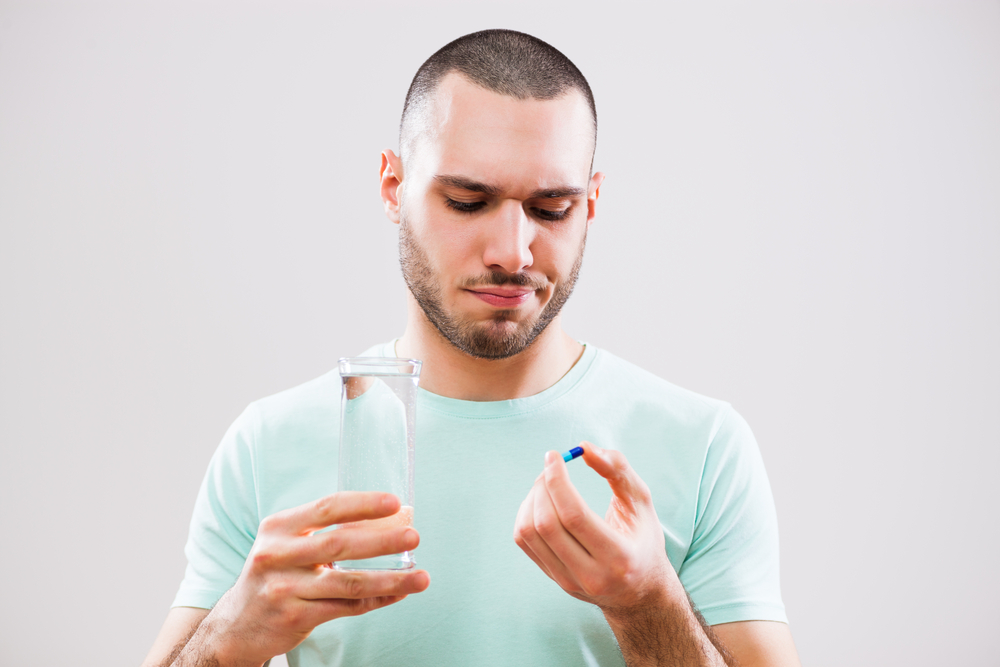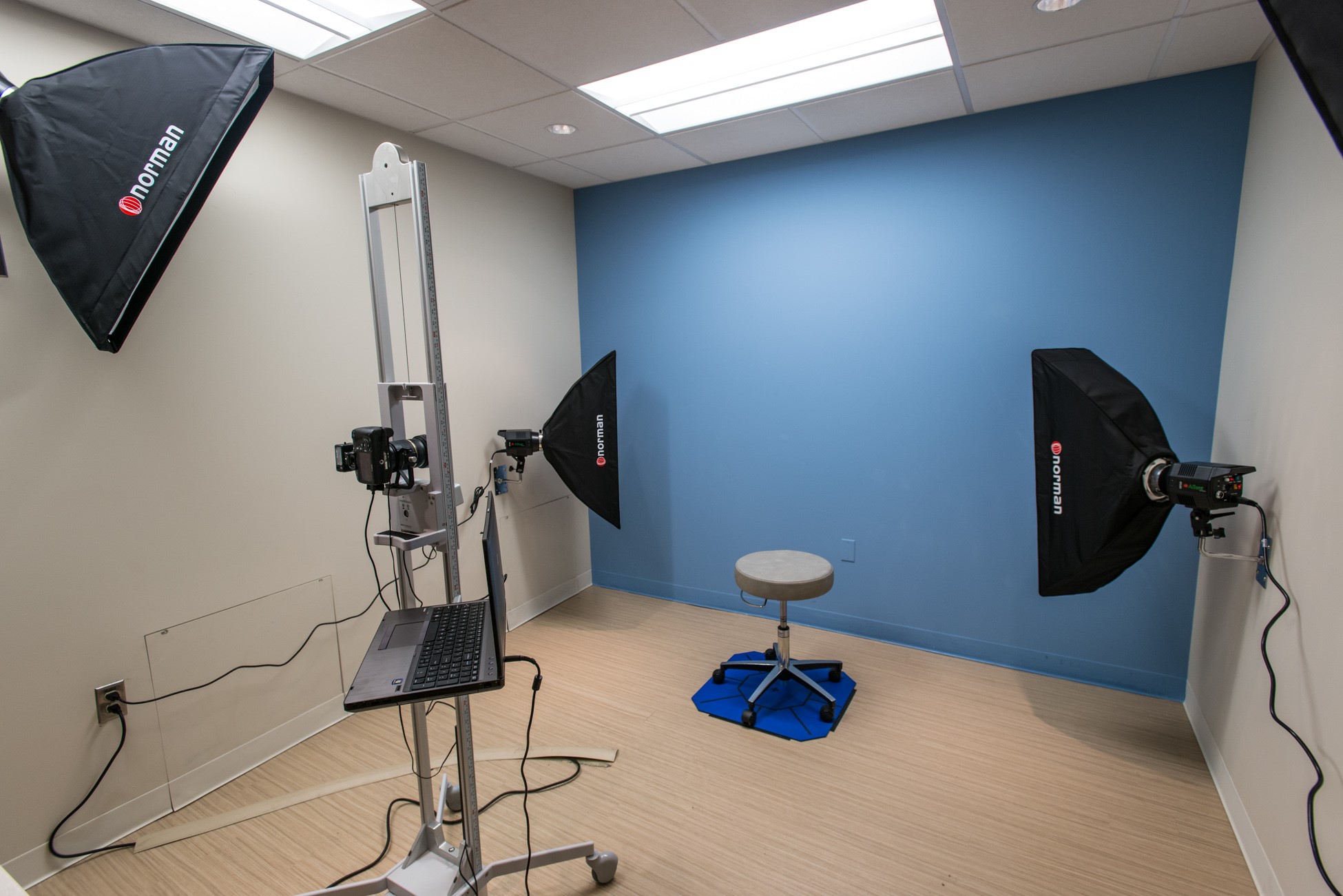- Common FDA-approved hair loss medications include Finasteride, Minoxidil and Ketoconazole.
- The most effective of these is Finasteride, which works by blocking the body’s production of DHT.
- Some international treatments have not yet been approved by the FDA.
- Many dermatologists recommend a “multi-pronged” approach to fighting hair loss which includes multiple treatments.
Since the dawn of time, humans have been losing their hair. And for almost as long, peddlers of phony remedies have been selling useless tonics which promise overnight regrowth.
Fortunately, those days are mostly behind us.
Unfortunately, however, there are still more than a few snake oil salesmen still promoting hair loss pills and bogus overnight remedies on the Internet.
So What Works?
Back in the late 1980s the FDA approved the first pharmaceutical product in history which was proven to reduce hair loss. That product was Minoxidil, sold under the brand name Rogaine.
Ever since then the ranks of legitimate hair loss medications have grown — and the war against thinning hair — has turned for the better.
Today, a small arsenal of highly effective, FDA-approved hair loss products are available to men and women. A newer generation of treatments incorporating 5-alpha reductase inhibitors have turned what was once a losing battle into hope, success and even hair regrowth.
What Causes Hair Loss?
In order to understand the different types of treatments, it’s important to understand what causes hair loss in the first place.
The short answer in the vast majority of cases comes down to dihydrotestosterone (DHT).
Over 95% of all instances of hair loss in both males and females is the result of androgen hormones. While these hormones are found in both genders, men naturally exhibit much higher blood serum levels that transport hormones throughout the body. Early in life androgens play a vital role in male sexual development. But later in life the same hormones are responsible for the most common form of baldness: androgenetic alopecia.
The blame in these cases lies with DHT, a particular type of androgen which is responsible for shrinking and closing hair follicles. Over time, this action causes the affected follicles to close up and die — leading to thinning or lost hair.
DHT Blockers vs. Other Treatments
Both Finasteride and Dutasteride belong to a class of drugs called 5-alpha reductase inhibitors. Their principal role is to block the body’s natural production of DHT and stop or slow the further destruction of hair follicles.
Finasteride: Benefits and Side Effects
Finasteride was the first FDA-approved DHT blocker proven to be an effective treatment against hair loss. Sold under the name Propecia since 1992, Finasteride remains one of the most popular and effective treatments currently available.
A single 1mg dose of Finasteride taken daily has been shown to lower DHT levels by up to 60%.
Studies have shown that an amazing 86% of men treated with Finasteride experience a complete stop in further hair loss. And 65% of men treated with Finasteride exhibit significant new hair growth.
While Finasteride is well tolerated by most patients, there are some side effects to be aware of, including:
- Decreased libido
- Impotence or trouble reaching orgasm
- Abnormal ejaculation
- Swelling in the hands or feet
- Swelling or tenderness in the breasts
- Dizziness, weakness, nausea
- Headache
- Skin rash
- Runny nose
The average price for Finasteride treatments in the US is approximately $75 per month. Insurance companies don’t typically cover these costs.
Dutasteride: Benefits and Side Effects
Dutasteride has a similar mechanism of action to Finasteride. By blocking the body’s natural conversion of testosterone to DHT, hair loss is prevented.
While Dutasteride has not yet been FDA-approved for the specific prevention of pattern baldness, it is available in the United States as a treatment for prostate enlargement, and internationally as a prescription medication for treating thinning hair.
Dutasteride is sold in the United States under the trade name Avodart and is also available under several generic preparations. Studies have shown that it’s a more effective treatment for the reduction of DHT in the blood than Finasteride — with some tests indicating a reduction of blood serum DHT by more than 90%.
Dutasteride has some potentially serious side effects including:
- Reduced libido
- Impotence or trouble reaching orgasm
- Abnormal ejaculation
- Testicle pain or swelling
- Increased breast size, gynecomastia
- Breast tenderness
Because Dutasteride’s efficacy is dose dependent and there are no specific dosage recommendations for hair loss treatment, monthly costs vary widely.
Minoxidil: Benefits and Side Effects
Minoxidil, also known as Rogaine, was the very first hair loss treatment to be approved by the FDA. Unlike Finasteride and Dutasteride, it is not a DHT blocker.
Minoxidil began its life as a pill used to treat high blood pressure. While testing Minoxidil researchers quickly discovered that the drug had an unusual side effect: patients began to grow hair in odd places, like their hands, cheeks and foreheads.
It wasn’t long after these reports emerged that another application for Minoxidil became clear: rather than take the drug in pill form, Minoxidil could be applied directly to the scalp in an effort to stop hair loss and regain healthy hair growth.
Today Minoxidil is still an important element of several hair loss programs, and belongs to a class of medications known as “vasodilators.” Although not as effective as DHT blockers, Minoxidil has been shown to be marginally effective at slowing hair loss and, in some cases, growing new hair.
Minoxidil is generally very well tolerated. Potential side effects include:
- Burning or stinging
- Fatigue
- Swelling of hands or feet
- Unusual weight gain
- Rapid heart beat
Minoxidil treatment depends on brand and dosage. The cost of generic minoxidil typically ranges from $15 to $25 per month.
Ketoconazole: Benefits and Side Effects
Rounding out the increasingly wide range of options for treating hair loss is a somewhat unlikely contender: Ketoconazole.
Perhaps better known by its brand name Nizoral, Ketoconazole is an antifungal agent sold as a shampoo. Doctors still aren’t completely sure how Ketoconazole works, but studies indicate that it does help to slow hair loss and may stimulate new growth.
It’s believed that Ketoconazole inhibits the body’s natural production of DHT, although not nearly at the same level as Finasteride or Dutasteride.
The 1% solution of ketoconazole shampoo can be purchased over-the-counter at pharmacies, while stronger preparations require a prescription.
A non-prescription product, Ketoconazole shampoo is typically very well tolerated. However, potential side effects include:
- A numbness or tingly feeling
- Mild itching or skin rash
- Headache
- Breast swelling
- Impotence or loss of libido
One 7-ounce bottle of over-the-counter Nizoral shampoo costs between $10 and $20, depending on your location.
Hair Loss: It’s Not Just Men
Most men deal with hair loss at some point in their lives. Nearly 40% of men show a noticeable degree of loss by the age of 35. Later in life the numbers jump starkly higher, with 65% of men experiencing hair loss by age 60 and 80% losing their locks by the age of 80.
While we often think of hair loss as primarily a male issue, the number of women affected by the condition is also extremely high. A full 40% of women experience visible loss of hair by the age of 40, while 50% will experience some degree of hair loss during their lives.
While men and women both suffer from hair loss, they frequently experience the condition in different ways. Men are more likely to experience “pattern baldness,” the form of the condition we’re all familiar with: a combination of a receding hairline and hair loss on the top of the scalp, or crown.
Women, on the other hand, typically experience a more evenly distributed thinning of hair across their scalps — although they can experience pattern hair loss as well.
For a more detailed look at what women can do about thinning hair, be sure to read Zwivel’s guide to female hair loss.
How About Hair Loss Treatments for Women?
Research shows that Spironolactone — sold under the name Aldactone — helps approximately 30% of women who suffer from female pattern baldness to stop or reverse their hair loss. Often called “spiro” for short, Spironolactone has shown particular promise when treating hair loss for women but is less effective with men.
Because of some serious side effects — in particular the implications for pregnant women — Spironolactone is not yet FDA-approved for the treatment of hair loss.
Interested in spironolactone for treating female pattern hair loss or telogen effluvium? Read our complete report on spironolactone here.
Which Treatment Is Best for You?
Before starting any treatment it’s important to set realistic expectations. Pharmaceutical approaches to androgenetic alopecia do not typically “cure” the condition. Keep in mind that hair loss products are intended to be ongoing treatments and must be adhered to for long periods of time to remain effective.
Each treatment has its own individual benefits and potential side effects. You should consult with your doctor before beginning any hair loss treatment program to discuss your medical history and any current medical conditions you may have.
Many doctors recommend a multi-pronged approach to fighting hair loss which includes a DHT blocker like Finasteride, a vasodilator like Minoxidil, and a shampoo treatment containing Kketoconazole.
You may also want to consider using a laser comb, which is an FDA-approved, non-pharmaceutical treatment for fighting hair loss.
Some hair loss may be temporary and possibly linked to diet, illness or physical trauma. If you’re concerned about losing your hair and considering treatment, be sure to consult with your doctor to make sure the condition doesn’t stem from a related health problem.
And as always, remember to steer clear of the snake oil salesmen out there on the Internet.









